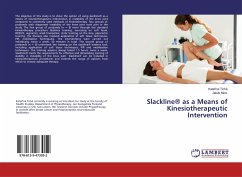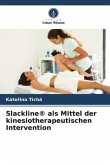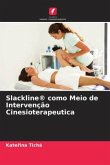The objective of this study is to show the option of using slackline® as a means of kinesiotherapeutic intervention in instability of the knee joint compared to commonly used methods of kinesiotherapy. Two groups of probands with diagnosed instability of the knee joint took part in the study. The first group of probands (n = 8) went through the standard kinesiotherapy procedure (balance training, exercising on soft foam, BOSU®, segments, small trampoline, static training on the step, plyometric training; the therapy also involved application of soft tissue techniques, PIR, mobilisation techniques). The interventions were carried out individually, twice a week, 50 minutes in total. The second group of probands (n = 8) undertook the training on the slackline® balance tool, including application of soft tissue techniques, PIR and mobilisation techniques. The training sessions always lasted 1.5 hours, twice a week. Slackline® meets the requirements for effective and demanding training of stability in instability of the knee joint. Slackline® can be included in kinesiotherapeutic procedures and extends the range of options from which to choose adequate therapy.
Bitte wählen Sie Ihr Anliegen aus.
Rechnungen
Retourenschein anfordern
Bestellstatus
Storno








